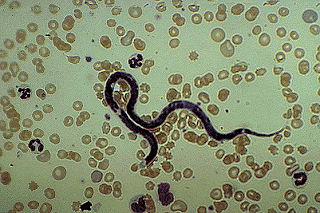The importance of vaccinating your dog can never be overstated since it is very necessary to keep the dog alive. For without proper vaccinations the dog will die.
Just like a new baby needs all the necessary immunizations to guarantee a proper health condition, your little puppy will also need the care of regular vaccination to keep it healthy and strong. Even if it is painful, causing the dog to scream and cry in pain, do not avoid it because it is the secret to a healthy dog's life.
These vaccines are small fractions of a disease given to the dog to avoid the infection of that disease in the future. This is one of the necessary things a dog owner should give the dog, as stipulated by the department of animal production and health.
There are only two types of vaccinations for dogs, Killed and live vaccines are their names. The version of the live vaccine available presently is the modified live vaccines, in this case the live vaccination has been modified so that the little portion of the disease injected into the dog's body will not cause harm but actually do the good it is supposed to do, by protecting and not causing the sickness it was supposed to avoid.
Killed vaccination kills the disease in it , prior to the injection of the vaccines. The reason for giving dogs these vaccines is to alert the immune system of the different types of diseases, so that the dog can develop immunity to these diseases and can never be affected by them in the future. This occurs by the production of antibodies in the blood system to fight against the onslaught of these diseases if they occur. It is very important for dog owners to visit the Vet clinic regularly for vaccinations, since each vaccine given protects the dog for just one year at most.
The frequent vaccinations of dogs are very important, since it protects and prevents awful diseases like, rabies, infectious Hepatitis, Canine Distemper, parvo virus, Corona Virus etc. from affecting the dog. The Canine Distemper is a disease that is capable of paralyzing the nervous system of the dog, this is the work of the canine virus. The disease destroys about fifty percent of dogs suffering from it, with its main targets set on dogs between the middle ages. But it also affect old dogs or puppies.
The very popular rabies vaccines are another type of vaccines a dog owner should give to the dog. If the rabies disease is not treated in the dog it can be transferred to human beings through dog bites or saliva.The major characteristics behavior of the sufferer of rabies is an over activeness, excess saliva output and uncontrolled behavior.
hepatitis vaccine(D
HL), unlike that of human beings is another important vaccination for dogs. It is a lethal disease that can cause death, so the vaccines should not be missed. This disease is transferred through stool, urine and saliva from one dog to another, it does not affect human beings, but can affect any dog at all, regardless of its age.
Parvo virus is a disease that can be transferred from one puppy to another through feces, it is a disease that can infect puppies and middle age dogs. A vaccine is given to prevent this disease and it is also wise to stop your dogs from eating the feces of others.
Vaccination schedule for dog
Vaccinated mother…..( නිවැරිදි ආකාරයෙන් එන්නත් ලබාදී ඇති මවකගේ පැටවෙකුට..)
Age of animal 6 week 8 week 10 week 12 week Annual booster
Vaccine Parvo 1 DHL 1 ARV 1 Parvo 2 ARV
DHL 2 Parvo
DHL
Unvaccinated mother …..( නිවැරිදි ආකාරයෙන් එන්නත් ලබාදී නැති මවකගේ පැටවෙකුට..)
Age of animal 5week 6 week 8 week 12 week 16 week Annual booster
Vaccine ARV 1 Parvo 1 DHL 1 Parvo 2 ARV 2 ARV
DHL 2 DHL
Parvo
This schedule can be change according to different conditions of animals.
If you have cat in your home anti rabies vaccine(ARV) must be vaccinated annually.
Side Effects of Vaccinations:
Pet owners worry about health risks associated with vaccinations. Prevention is better than cure.
Vaccination protects pets against life threatening disease which may be incurable, highly contagious and expensive to treat, at later stages. Some mild reactions like low grade fever, dull aches and pains, vomiting, low appetite and activity are common with most animals.
Do not bath your pet for three days after vaccinating.
If you notice that your pet is experiencing problems, several hours, after being vaccinated, consult a vet right away. Vaccine related diseases are quite rare but nevertheless, chances should never be taken.
Article Source: http://EzineArticles.com/1662253, http://slveterinarian.blog.com/2011/03/19/vaccination-schedule-for-dog/













